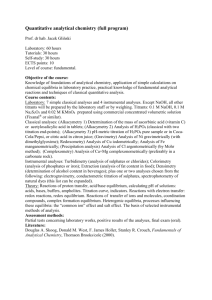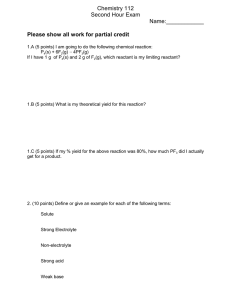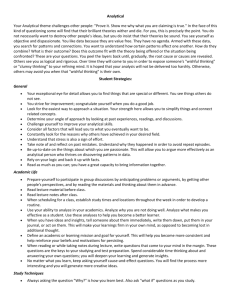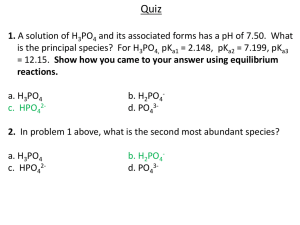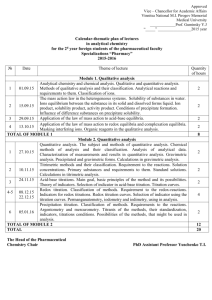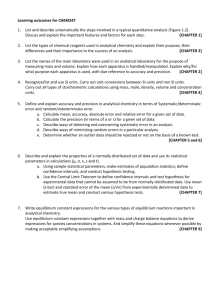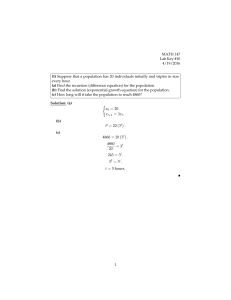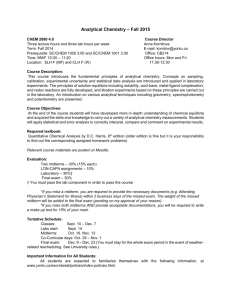Syllabus for the half
advertisement
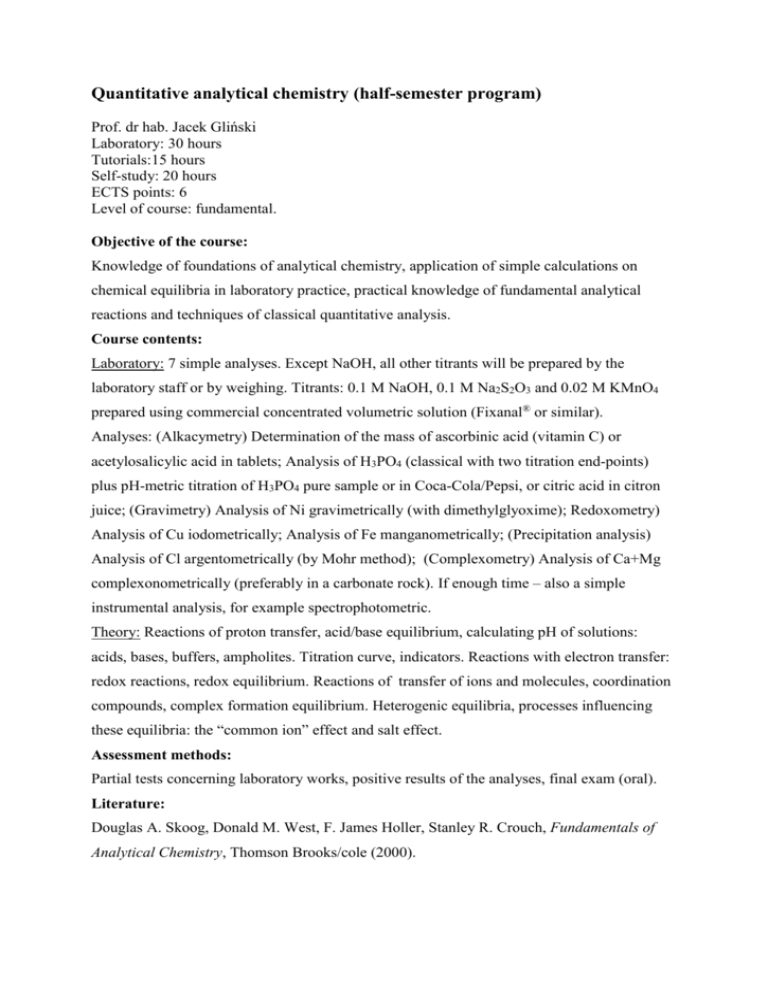
Quantitative analytical chemistry (half-semester program) Prof. dr hab. Jacek Gliński Laboratory: 30 hours Tutorials:15 hours Self-study: 20 hours ECTS points: 6 Level of course: fundamental. Objective of the course: Knowledge of foundations of analytical chemistry, application of simple calculations on chemical equilibria in laboratory practice, practical knowledge of fundamental analytical reactions and techniques of classical quantitative analysis. Course contents: Laboratory: 7 simple analyses. Except NaOH, all other titrants will be prepared by the laboratory staff or by weighing. Titrants: 0.1 M NaOH, 0.1 M Na2S2O3 and 0.02 M KMnO4 prepared using commercial concentrated volumetric solution (Fixanal® or similar). Analyses: (Alkacymetry) Determination of the mass of ascorbinic acid (vitamin C) or acetylosalicylic acid in tablets; Analysis of H3PO4 (classical with two titration end-points) plus pH-metric titration of H3PO4 pure sample or in Coca-Cola/Pepsi, or citric acid in citron juice; (Gravimetry) Analysis of Ni gravimetrically (with dimethylglyoxime); Redoxometry) Analysis of Cu iodometrically; Analysis of Fe manganometrically; (Precipitation analysis) Analysis of Cl argentometrically (by Mohr method); (Complexometry) Analysis of Ca+Mg complexonometrically (preferably in a carbonate rock). If enough time – also a simple instrumental analysis, for example spectrophotometric. Theory: Reactions of proton transfer, acid/base equilibrium, calculating pH of solutions: acids, bases, buffers, ampholites. Titration curve, indicators. Reactions with electron transfer: redox reactions, redox equilibrium. Reactions of transfer of ions and molecules, coordination compounds, complex formation equilibrium. Heterogenic equilibria, processes influencing these equilibria: the “common ion” effect and salt effect. Assessment methods: Partial tests concerning laboratory works, positive results of the analyses, final exam (oral). Literature: Douglas A. Skoog, Donald M. West, F. James Holler, Stanley R. Crouch, Fundamentals of Analytical Chemistry, Thomson Brooks/cole (2000).
